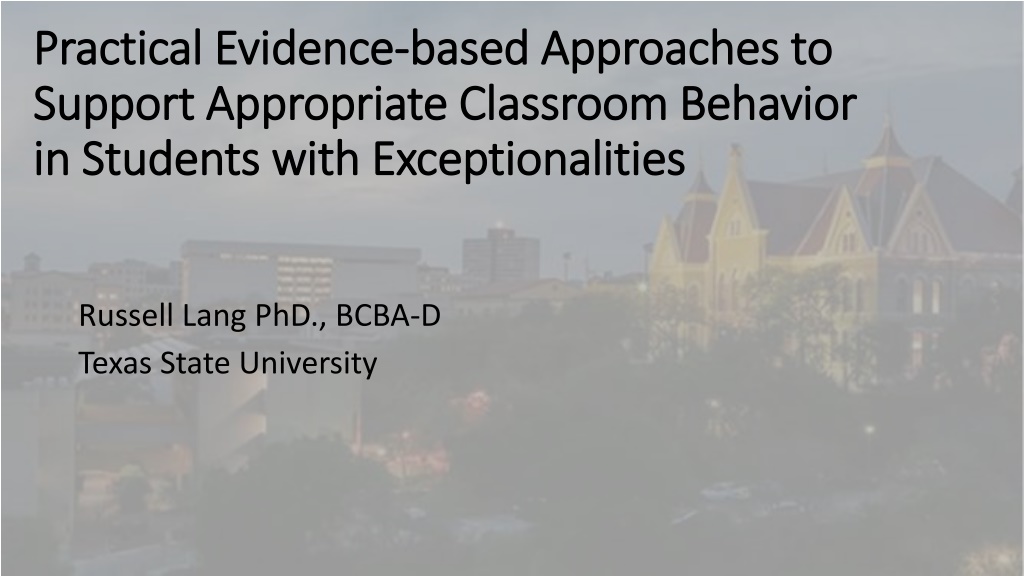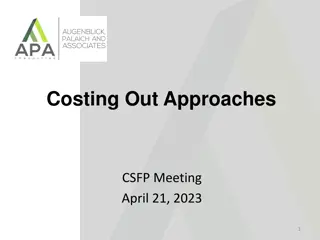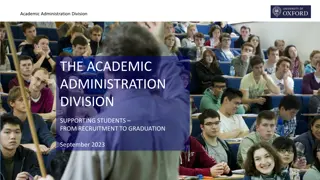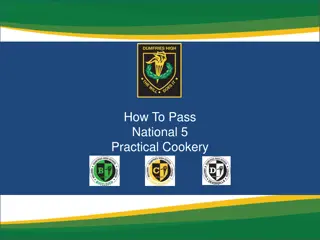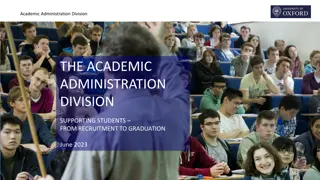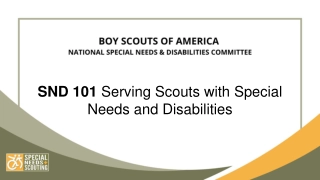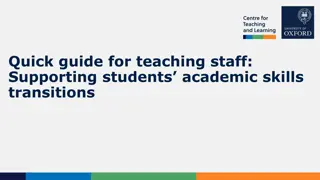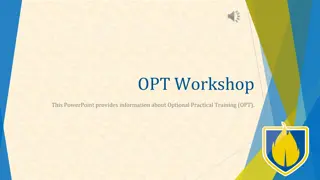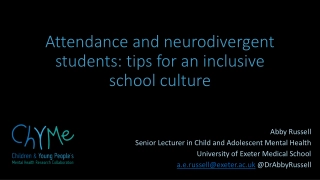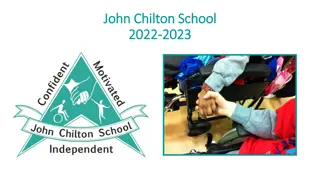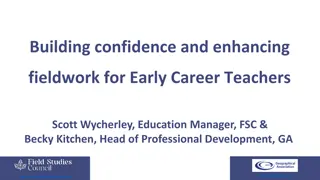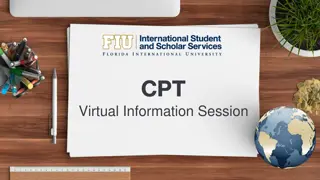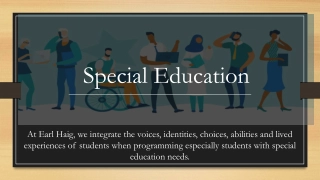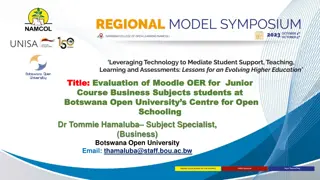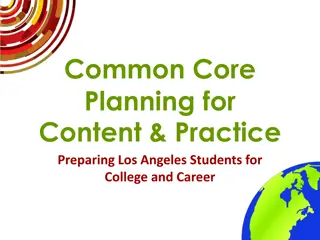Practical Approaches for Supporting Students with Exceptionalities
Explore evidence-based strategies for promoting appropriate classroom behavior in students with exceptionalities, including considerations for word choice, behavior management, and understanding intellectual and developmental differences. Gain insights into the unique support needs of individuals with IDD, emphasizing the importance of adaptive skills, social interactions, communication, and critical thinking.
Download Presentation
Please find below an Image/Link to download the presentation.
The content on the website is provided AS IS for your information and personal use only. It may not be sold, licensed, or shared on other websites without obtaining consent from the author. Download presentation by click this link. If you encounter any issues during the download, it is possible that the publisher has removed the file from their server.
- Classroom behavior
- Exceptionalities support
- Behavior management
- Intellectual differences
- Developmental support
Presentation Transcript
Practical Evidence Practical Evidence- -based Approaches to based Approaches to Support Appropriate Classroom Behavior Support Appropriate Classroom Behavior in Students with Exceptionalities in Students with Exceptionalities Russell Lang PhD., BCBA-D Texas State University
Word Choice Rationale Person-first or Identity-first language? (Keating et al., 2022) Person with Autism or Autistic Person , the point is to be respectful and kind Challenging Behavior or Challenging Student ? Behavior places emphasis on the role of educators in addressing challenges and avoids implying that the student as person or the diagnosis of ASD is a problem. Deficit Language or Support Needs Acknowledging real challenges is an important part of addressing those challenges. However, sole focus on deficits portrays an inaccurate picture of people with intellectual and developmental differences.
Students with Intellectual and Developmental Differences/Disabilities Basic Principles of Behavior Management Behavior Management Strategies Open Discussion and Questions
7.3 Million Students with Disabilities in US 1 in 36 children diagnosed with Autism Spectrum Disorder (4 in 10 boys; 1 in 10 girls) CDC, 2023 Texas has more children than any other state AND # children in TX is increasing faster than any other state
Intellectual and Developmental Differences Intellectual and Developmental Differences Potential Support Needs Adaptive Behavior: skills needed to function in daily life (e.g., hygiene skills, toileting, time management, financial management) Social Skills: Making and maintaining friendships, family interactions, interpersonal skills, non-verbal communication Skill Acquisition: Learning new information and how to complete tasks Communication and Language: expressive and receptive Critical and Abstract Thinking: Analyzing and evaluating information and arguments, identifying mistakes or inconsistencies, and solving problems If you have met one If you have met one person with IDD, person with IDD, you ve met one you ve met one person with IDD. person with IDD.
In 2018-19, Students with Disabilities Represented: Risk Factors for Risk Factors for Challenging Behavior Challenging Behavior 17% of students assigned to Juvenile Justice Alternative Education programs 18% of Expulsions to Disciplinary Alternative Education programs Higher Support Needs Language & Communication Challenges Co-occurring Conditions (ADHD, Anxiety Disorder) Unsupportive environment Unfair expectations Ineffective educational and behavior management practices 21% of Out of School Suspensions
What is Challenging Behavior? What is Challenging Behavior? Behaviors that interfere with learning, cause harm to self or others, and/or that limit meaningful opportunities; vary in nature, intensity, and frequency. Aggression: hitting, biting, pushing, or physically harming self or others. Disruptive Behavior: shouting, property destruction, or tantrumming "Noncompliance : Refuse to follow teacher instructions, incomplete work, or other school rule violations Is it really a challenging behavior? Self-stimulatory Behavior? Refusal to make eye contact? Noncompliance? Considerations: Is it interfering with learning? Is it likely to limit opportunities? Is it necessary to address now? Would you notice if it weren t the autistic student? Is it compliance just for compliance sake? Who benefits the most if intervention is successful?
Where does his challenging behavior come from? He does that because He does that because he has autism. he has autism. His parents are to blame. His parents are to blame. He just needs discipline. He just needs discipline. MEDICATION AND PUNISHMENT DO NOT TEACH APPROPRIATE BEHAVIOR (also, usually do not work to stop challenging behavior.)
Ive come to a frightening conclusion that I am the decisive element in the classroom. It s my personal approach that creates the climate. It s my daily mood that makes the weather. As a teacher, I possess a tremendous power to make a child s life miserable or joyous. I can be a tool of torture or an instrument of inspiration. I can humiliate or heal. In all situations, it is my response that decides whether a crisis will be escalated or de-escalated and a child humanized or dehumanized. Challenging Behavior is Challenging Behavior is Learned Learned All challenging behavior is learned. Children learn from interacting with their environment. You (the teacher) are a major part of that environment. Your classroom arrangement, routines, and expectations are major parts of the environment. The way you behave when challenging behavior is not occurring is part of the environment. The way you respond to challenging behavior is part of the environment. Change the environment to change behavior. Haim Ginott Between Teacher and Child
The Environment Before and After Challenging The Environment Before and After Challenging Behavior is the key to Changing Behavior. Behavior is the key to Changing Behavior. Motivating Operations BEHAVIOR CONSEQUENCE ANTECEDENT Stuff that influences how the antecedent environment and consequences will influence behavior. How the environment responds to the child s behavior. The environment BEFORE the occurrence of a challenging behavior. How the child responds to the antecedent environment. What do they obtain or avoid? Do they get attention from teachers/peers? Do they access a preferred item/activity? Do they avoid work or escape an undesirable situation or activity? Bad night s sleep Sick Bullied on Playground Medication side effects Everything and everybody that can be detected by senses. All Behavior.
ANTECEDENT INTERVENTIONS: CONSEQUENCE INTERVENTIONS: Arranging environment and setting expectations to avoid challenging behavior Teacher s response to student behavior that reduces the chance challenging behavior will occur again or increases chance desired/appropriate behavior will occur again Praise, gestures, proximity, eye contact, opportunities to help and notes can all be used to provide attention If challenging behavior occurs to Obtain attention, then provide attention before it does. If challenging behavior occurs to escape or avoid something, make the task more fun, give frequent breaks, or maybe don t require it. Reinforce even brief occurrences of on- task behavior and work completion. TEACH!
Caution on Antecedent Caution on Antecedent- -Only Classroom Management Approaches Only Classroom Management Approaches Luczynski & Hanley, 2013 Preschool life skills program compared two conditions in terms of emergence of challenging behavior. Antecedent Intervention Condition: Six children assigned to a classroom that relied almost exclusively on antecedent interventions (plenty of toys and materials, proactive provision of attention, access to preferred activities, and avoidance of difficult tasks and demand) Findings and Conclusions All 12 children had similar levels of challenging behavior prior to group assignment (baseline). Children in the Antecedent-Only group engaged in less challenging behavior than the Direct Instruction group when interventions were in place. When interventions were removed and both groups returned to business as usual, challenging behavior increased beyond baseline levels in the antecedent group but continued to decrease in the direct instruction group. Direct Instruction Functional Communication & Self-Control Condition: Six children assigned to a classroom that intentional created situations where children would need to share materials, wait to access preferred items or activities, and directly request attention or support from teachers. (embedded teaching opportunities)
Practical Classroom Management Strategies to Practical Classroom Management Strategies to Prevent Prevent Challenging Behavior Challenging Behavior Classroom Behavior Management Strategy Underlying Logic Examples Reduces challenging behavior caused by a misunderstanding of the rules or expectations. Rules should be taught before they are accidentally/unknowingly broken. What do students do when they first arrive? What do students do when they finish work? How to request help? When is it okay to talk and play with friends? What to expect each day? Set clear expectations and consistent classroom routines
What are characteristics of good classroom rules? Involvement: Whenever possible, involve students in the process of creating classroom rules. Specific: Rules should be specific about the expected behaviors. Vague rules like Show Respect for your school" are not as effective as throw away your trash . Positive and Proactive: Phrasing rules in a positive and proactive manner is more effective than focusing on what students should not do. For example, "Raise your hand to speak" is more positive than "Don't shout out. Consistent and Enforceable: Rules should be realistic and enforceable. They should not be so strict that they set students up for constant failure, nor should they be so lenient that they allow disruptive behavior.
TURN TURN- -TALK TALK- -SHARE SHARE What are your classroom rules/expectations and how will you teach those to your students? Social Stories: Create social stories that specifically address classroom rules and expectations. Social stories use text and images to explain the rules in a context that the child can relate to. Specific Praise and Reinforcement: Encourage and praise children when they follow the rules and meet expectations. Use positive reinforcement, such as stickers, tokens, or verbal praise, to reward good behavior. Role-Playing: Engage in role-playing activities where you and the child act out various scenarios related to the rules. This helps them practice appropriate behaviors in a safe environment. Individualization: Recognize that each child is unique, and their understanding and abilities may vary. Tailor your teaching approach to each child's needs and capabilities.
Practical Classroom Management Strategies to Practical Classroom Management Strategies to Prevent Prevent Challenging Behavior Challenging Behavior Classroom Behavior Management Strategy Underlying Logic Tips and Examples A teacher s verbal reminders to follow the rules is often insufficient. Embedding reminders of expectations into physical arrangement of classroom reduces emphasis on verbal instructions. Classroom arrangement can make following rules easier than not following the rules. Arrange furniture and materials such that it is less effortful to met expectations than to break rules. Put cubby by the door, turn it in folder next to reinforcer options, toys and other distracting materials out of sight Can students guess what is expected of them by looking around the room? Arrange classroom environment to support adherence to rules and routines
TURN TURN- -TALK TALK- -SHARE SHARE Consider classrooms you ve worked in or observed and give specific examples of what was (or could have been) done to arrange the classroom to support appropriate behavior.
Practical Classroom Management Strategies to Practical Classroom Management Strategies to Prevent Classroom Behavior Management Strategy Prevent Challenging Behavior Challenging Behavior Tips and Examples Underlying Logic Rewarding appropriate behavior that is incompatible with challenging behavior is typically more effective than correcting challenging behavior. If using praise, be very specific (wow! Mykel is sitting in his seat listening. He is going to be first in line for recess!) Identify models of good behavior and avoid calling attention to students for challenging behavior. Works best for students who value attention from adults Reinforce appropriate behavior with behavior-specific praise that highlights naturally reinforcing consequences. Use vicarious Reinforcement
Practical Practical Classroom Management Strategies to Classroom Management Strategies to Prevent Classroom Behavior Management Strategy Prevent Challenging Behavior Challenging Behavior Tips and Examples Underlying Logic Autistic students often indicate a preference for visual prompts over verbal or physical prompts. Reminders of reward contingencies help sustain motivation for appropriate behavior. Use pictures to augment text, particularly in early childhood (picture of hands under water in sink above sink and on door to exit bathroom). Visual cues should clearly communicate the expectation AND reason why / reward contingency Embed visual cues and supports that communicate expectations
Practical Practical Classroom Management Strategies to Classroom Management Strategies to Prevent Classroom Behavior Management Strategy Prevent Challenging Behavior Challenging Behavior Tips and Examples Underlying Logic Choice helps make non- preferred activities more tolerable and reduces challenging behavior that occurs to avoid or escape those tasks. Choice makes preferred activities even more preferred. Limit choice options to what is available and acceptable in the classroom Use different types of choices and be creative (within-task and across-task choices) Works best for challenging behaviors related to avoiding work (escape function) Offer more choices!
Choice and Self Choice and Self- -Determination Offering choices may reduce challenging behavior and support development of Self-Determination Reducing the averseness of tasks decreases the desire to escape and thereby decreases occurrence of CB reinforced by escape. Increase engagement: Offering choices increases engagement by allowing students to gain more control and autonomy in their learning. Autistic students (and others) are likely to be more motivated to participate when they have a say in what they are doing and how. Determination
TURN TURN- -TALK TALK- -SHARE SHARE Consider classrooms you ve worked in or observed and identify 3 specific opportunities for a student with IDD to be offered a choice.
What choices does ChatGPT suggest? What choices does ChatGPT suggest? Choice of Seating: Allow the student to choose their preferred seat in the classroom, whether it's at a desk, a table, or a quiet corner. Activity Selection: Offer a selection of classroom activities or tasks, and let the student choose which one they'd like to work on next. Preferred Materials: Provide choices of materials for assignments, such as offering options for writing tools (pencil, pen, or marker) or art supplies (crayons, colored pencils, or markers). Break Activities: Allow the student to select from a list of preferred activities for short breaks, like coloring, reading, or a sensory break. Assignment Order: When possible, let the student decide the order in which they complete their assignments or tasks for the day. Daily Schedule Choices: Provide a visual schedule with choices for certain parts of the day, like selecting between different subjects or activities during "choice time." Peer Interaction: Encourage the student to choose a peer they'd like to work with on a group project or activity. Reward Options: Offer a choice of rewards for positive behavior or task completion, allowing the student to select something motivating to them. Lunch and Snacks: Allow the student to choose their lunch options or snacks from a predetermined list, considering any dietary restrictions. Transition Choices: Offer choices related to transitions, such as selecting a preferred transition activity or deciding how to transition between activities (e.g., using a timer or visual cue).
Tips to Improve Classroom Token Tips to Improve Classroom Token Economy Systems Economy Systems Identify a few SPECIFIC appropriate behaviors that will be reinforced. Identify the behavior being reinforced when the token is delivered. Provide frequent opportunities to spend tokens. Avoid response cost, better not to remove tokens that have already been earned. Consider individual student preferences when selecting items for exchange, add/change available items often, set prices so students can be successful early on and increase as needed. Consider the purpose (function) of challenging behavior and offer activities or prizes that also fulfill that purpose/function. Strategically design tangible tokens. Consider using fake money to support teaching how to count currency OR individualize tokens based on autistic students interests and preferences.
Practical Practical Classroom Management Strategies to Classroom Management Strategies to Prevent Classroom Behavior Management Strategy Prevent Challenging Behavior Challenging Behavior Tips and Examples Underlying Logic Difficulty with transitions is commonly reported by teachers. BUT, it is not usually the transition itself that causes trouble. Moving from high preferred task to low preferred task causes trouble Arrange schedule to avoid moving from favorite activity to most challenging/least favorite activity Move to neutral activity to break up transition Give a series of easy and fun instructions/demands before difficult less preferred requests Access preferred items or activities during disguised transitions Build momentum using High Probability Request Sequence
Differentiate between Performance Deficit vs Skill Deficit Differentiate between Performance Deficit vs Skill Deficit Performance Deficit: The individual possesses the necessary skills to perform a task, but fails to do so. Due to lack of motivation, distractions, or interference from other behaviors. For example, a student who has learned how to solve math problems but will not do so on math worksheet. Intervention should involve: Increase motivation by altering reinforcement contingencies (maybe a good grade isn t reinforcing for all students) Reduced distractions, competing behaviors Skill Deficit: The individual lacks the necessary skills to perform a task. Due to lack of instruction, missing prerequisite skill, or physical limitation. For example, a student who does not tie their shoes may lack necessary fine motor skills. Intervention should involve: TEACHING! Identify missing prerequisites Direct Instruction on missing skill You ll never remediate a skill deficit with punishment!
Considerations for Individual Student Interventions for Challenging Behavior Considerations for Individual Student Interventions for Challenging Behavior Functional Behavioral Assessment: FBA is a process used to identify the reasons behind challenging behavior (behavioral function). It is a multi-step process that involves observation, data collection, and analysis. Requires training MAIN GOALS OF FBA: Identify Function: could be to escape an unpleasant situation, gain attention, obtain a desired item, or seek sensory stimulation. General FBA Procedures Define target behavior Collect information from autistic individual and/or family Observe the behavior in natural setting (or as similar as possible). Identify antecedents and consequences Analyze the data Increased understanding of the individual: The FBA process can help individuals and those around them to gain a better understanding of the individual's needs, strengths, and challenges. This can lead to improved communication, empathy, and support.
Identify specific students who still need more support and determine what behaviors warrant intervention. Design procedures and expectations to support desired behavior using antecedent and consequence strategies for the whole class. What is the Behavioral Function? What does the student obtain or avoid immediately following and contingent on CB? Some form of attention? Some specific item? Some specific activity? Is intervention appropriate? Is it interfering with learning? Is it likely to limit opportunities? Is it necessary to address now? Would you notice if it weren t the autistic student? Is it compliance just for compliance sake? Who benefits the most if intervention is successful? Performance deficit or skill deficit? Performance Deficit: Student has the skill/ability and understood instructions but still does not engage in the appropriate behavior. Identifying and Assessing CB Key Considerations Skill Deficit: Student does not have the skill or ability to comply with instructions or does not understand the instructions. Consider student s preferences, dislikes, personality, culture, and family s values to ensure strategies uses are acceptable and improve probability of effectiveness.
Open Discussion and Questions Open Discussion and Questions Are you interested in graduate school? Consider Texas State University Graduate Program in Special Education! russlang@txstate.edu
